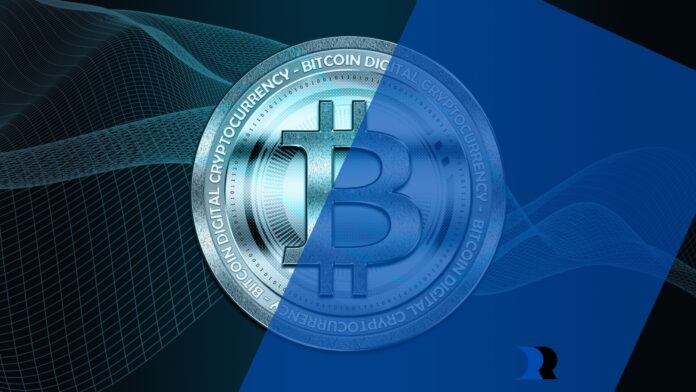In the realm of decentralized networks, blockchain forks signify crucial junctures in development. At their essence, forks denote instances where a blockchain bifurcates, charting divergent paths with distinct rule sets. These occurrences serve as pivotal touchpoints for grasping the flexibility and resilience inherent in blockchain technology. To fully grasp the import of these forks, a historical exploration becomes imperative. Delving into the past and scrutinizing the early instances of forks, along with understanding the motivations that propelled them, lays a foundational framework. This historical context is essential for cultivating a nuanced comprehension of how these events have intricately shaped the decentralized systems landscape. In addition, you can find an investment education company to start your learning journey by visiting https://tradermate.software/.
Types of Blockchain Forks
Soft Forks: Navigating Protocol Changes
Soft forks involve backward-compatible changes to a blockchain’s protocol. They are typically less disruptive and aim to improve efficiency, fix bugs, or enhance security without necessitating a unanimous upgrade from all network participants.
Hard Forks: Embracing Fundamental Blockchain Alterations
In contrast, hard forks are radical changes to a blockchain’s protocol, often requiring widespread adoption to avoid a split. These forks can result from disagreements on governance, scalability issues, or the desire to introduce features incompatible with the existing chain.
Contentious vs. Non-contentious Forks: Understanding the Divide
Forks are classified into contentious and non-contentious based on the level of agreement within the community. Contentious forks arise from significant disagreements, while non-contentious forks generally involve broad consensus on proposed changes.
Catalysts for Forks
Technical Upgrades: Enhancing Protocol Functionality
One of the primary reasons for blockchain forks is the need for technical upgrades. As the technology evolves, developers propose changes to enhance scalability, and security, or add new features, necessitating a fork to implement these modifications.
Governance Disputes: Decentralized Decision-Making Challenges
Decentralized networks often face governance challenges. Forks may emerge when stakeholders disagree on key decisions, such as protocol changes or network direction. Navigating these disputes becomes crucial for maintaining the integrity of the blockchain.
Network Security Concerns: Responding to Threats and Attacks
In cases of security vulnerabilities or malicious attacks, forks may be employed to safeguard the network. This response mechanism helps rectify flaws, reinforcing the blockchain’s resilience against potential threats.
Notable Forks in Blockchain History
Bitcoin and Bitcoin Cash: The Great Scaling Debate
One of the most famous instances of a hard fork occurred in the Bitcoin community, resulting in the creation of Bitcoin Cash. This fork was rooted in disagreements over scalability solutions, highlighting the challenges of achieving consensus in decentralized systems.
Ethereum and Ethereum Classic: Ideological Divisions
The Ethereum network experienced a contentious fork following a significant security breach.

The subsequent creation of Ethereum Classic highlighted the ideological divisions within the community, showcasing the complexity of decision-making in decentralized environments.
Ripple and Stellar: Navigating Pathways for Development
The Ripple and Stellar networks underwent significant changes, each choosing distinct paths in response to developmental challenges. Analyzing these forks provides insights into how projects adapt and evolve to ensure long-term sustainability.
The Impact on Decentralization
Strengthening or Weakening? Examining Forks’ Effects on Network Security
Forks can have varying impacts on decentralization. While some argue that forks enhance security by addressing vulnerabilities, others contend that frequent forks may lead to centralization risks if not carefully managed.
User Empowerment: Opportunities for Participation in Decision-Making
Decentralized decision-making is a cornerstone of blockchain technology. Forks offer users the opportunity to actively participate in shaping the direction of a network, promoting a sense of empowerment and community involvement.
Centralization Risks: Balancing Governance and Adaptation
The delicate balance between governance and adaptation poses challenges for blockchain networks. Striking the right equilibrium is essential to avoid centralization risks while fostering an environment conducive to progression and growth.
Community Responses and Resilience
Consensus-Building Strategies: Engaging Stakeholders in Fork Decision-Making
Successful forks often require robust consensus-building strategies. Engaging stakeholders through transparent communication and inclusive decision-making processes is key to navigating contentious issues and fostering a united community.
Fork Survival: How Communities Navigate Post-Fork Realities
Communities must adapt to post-fork scenarios, where two separate chains coexist. Examining how communities navigate these realities sheds light on the resilience and adaptability of blockchain projects.
Lessons Learned: Insights for Future Blockchain Development
Analyzing past forks provides valuable lessons for future blockchain development.

Understanding the consequences, challenges, and successes of previous forks informs the decision-making processes of emerging projects.
The Future of Forks: Trends and Prospects
Evolution of Fork Mechanisms: Exploring Adaptive Governance Models
The future of forks lies in the evolution of governance models. Blockchain projects are exploring adaptive mechanisms that allow for seamless upgrades while minimizing disruptions and maintaining consensus.
Interoperability Challenges: Bridging Gaps Between Forked Networks
As multiple blockchains coexist, interoperability becomes crucial. Overcoming challenges related to cross-chain communication and collaboration will be instrumental in ensuring a harmonious ecosystem of forked networks.
Regulatory Considerations: Shaping the Landscape for Forked Chains
Regulatory frameworks play a pivotal role in the future of forked chains. As governments worldwide grapple with blockchain regulations, understanding how forks align with or challenge these frameworks will shape the broader landscape.
Conclusion
In conclusion, the exploration of blockchain forks uncovers an intricate tapestry of technological evolution, governance challenges, and community dynamics. The synthesis of these insights offers a comprehensive understanding of the intricate nature of decentralized systems. Looking forward, the significance of forks in molding the future of blockchain technology cannot be overstated. As blockchain projects progress, forks persist as a dynamic force, propelling adaptation and ensuring the continual resilience of decentralized networks.


